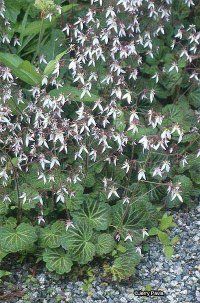The name Saxifraga means "rock breaker." Members of this genus of plants are generally found sprouting out of narrow crevices in rocky outcrops throughout the Northern Hemisphere. There are more than 300 species, many of which are in cultivation. Although the genus is widely grown, no one species could be said to be common. Most sources of rock garden plants offer several different ones.
Description of rockfoil: Most rockfoils are cushion-forming perennials with silvery or succulent foliage growing as clusters of small rosettes. In many cultivated forms the leaves are variegated yellow or white. The flower stalks are held well above the low-growing foliage and bear numerous flowers in shades of white, pink, purple, or yellow. Ease of care: Moderately easily.
Advertisement
Growing rockfoil: Most do best in gritty, well-drained soil and in sun or partial shade. Strawberry geranium (S. stolonmifera) differs from the others in requiring rich, moist soil.
Propagating rockfoil: By layering, cuttings, or seed.
Uses for rockfoil: These plants are good choices for planting in rock gardens, even where little soil exists: cracks, crevices, paving, screes, and the like. Strawberry geranium is better used as a woodland plant or a houseplant.
Rockfoil related species: London-pride (S. umbrosa) bears rosettes of green, shiny, tongue-shaped leaves and clusters of pink flowers. S. x urbium is similar with larger, toothed leaves. It is also called London-pride. Jungfrau rockfoil (S. Cotyledon) has spoon-shaped, pubescent leaves with white flowers veined in red. The least typical of the rockfoils is strawberry geranium (S. stolonifera). Its needs and uses are quite different, and it bears leaves quite unlike the others: round with silver veining and a red reverse. It also produces long stolons with plantlets at the tip.
Scientific name of rockfoil: Saxifraga species
Advertisement
